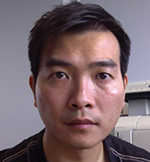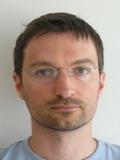Cost: £1,500
Book a place
Overview
This short course/CPD module aims to give you an in-depth understanding of the theories, techniques and tools to model, analyse and simulate today's communications systems and networks.
It's aimed at those working in the telecommunications industry.
The complexity of communication and signal processing systems has grown considerably during recent decades. The emergence of a variety of new technologies (such as fast and inexpensive hardware for DSP, fibre optics, integrated optical devices and microwave ICs etc.) has had a significant impact on the implementation of communication systems.
Computer-aided techniques are therefore vital for engineers to evaluate performance and optimise designs in a timely, cost-effective and effort-free manner.
In this course you'll consider:
- both the physical layer (link-level) and the network layer (network-level)
- the theory of modelling and practical applications using standard simulation packages
It will equip you to understand and apply analytic and simulation techniques appropriate for the representation, analysis and performance evaluation of communications systems and networks.
You'll use MATLAB simulation tools as an example to develop the analytical and simulation skills for performance evaluation.
The course is run by UCL's Department of Electronic and Electrical Engineering.
Who this course is for
The department's courses/CPD modules are aimed at those working in the telecommunications industry such as researchers, engineers, IT professionals and managers.
They're particularly suited to graduates in electronic and electrical engineering, physics, communications engineering and computer science who want to further their knowledge on a particular topic, or work towards a Master's degree.
You don't need to have any pre-requisite qualifications to take this course.
Course content
You'll cover the following areas during the course.
Introduction and the need of CSM via simulation
The importance of CSM is described and the challenges of performance evaluation of communications systems are discussed. The focus is on the methods for performance evaluation and the simulation approaches. The hierarchical model for communications networks is also introduced and a set of computer software technologies is reviewed.
- Methods of performance evaluation
- Hierarchical view of communications networks
- The application of simulation to the design of communication systems
Basics of simulation and modelling methodology
Problem-solving techniques using simulation are introduced and the relevant modelling concepts are discussed. Error sources in simulation and some practical issues are also described.
- Methodology of problem solving for simulation
- Basic concepts of modelling
- Performance Evaluation Techniques
- Error sources in simulation
- Simulation environment and software issues
Representation of signals and systems in simulation
The analytical tools are reviewed to understand and characterise signals and systems that are important for simulation.
- Deterministic signals and systems
- Continuous and discrete-time signals
- Signals in the time and frequency domains
- Fourier series and transforms
- Convolution
- Probability and stochastic processes
- Discrete and fast fourier transform (DFT/FFT)
- Hilbert transform and the complex envelope
- Sampling, signal design and analysis
Modelling and simulation of LTI systems
Modelling and simulation of linear systems are discussed in detail.
- Analogue filter design using Butterworth and Chebyshev filters
- Conversion method from analogue to digital filters (impulse invariant method, matched-Z transform and bilinear transformation)
- Frequency transformations for filter design
- Approximate continuous time structures in discrete time for simulation
- Linear-phase FIR filter design
- Windowing effects and optimisation
- Simulation of filtering with IIR filters
- Simulation of filtering with FIR filters
- Time-varying linear systems in the time and frequency domains
Modelling and simulation of nonlinear systems
Concepts used to model and analyse nonlinear systems are introduced.
- Bandwidth estimation for nonlinear systems
- Memoryless baseband nonlinearities
- Power series analysis
- Memoryless bandpass nonlinearities
- Nonlinearities with memory
- Volterra series modelling
Simulation and generation of random numbers
We describe the techniques to generate independent and correlated random sequences for simulation of noises and random communications sequences.
- Principle of Monte Carlo simulation
- Random number generation
- Generation of uniform random numbers
- Generating random numbers from a PDF
- Generating Gaussian random variables
- Generating independent random sequences
- Generating correlated random sequences
Case study: OFDM wireless networks
- Modelling for wireless channels
- Multi-ray frequency selective fading channels
- OFDM systems
- SER and BER simulations
Network modelling and queueing theory
- Stochastic processes (e.g. Poisson process)
- Markov chains
- Little's theorem
- Birth-death process
- M/M/1 queue
- Demonstration of NS-2 simulation
Dates, assessment and certificates
Classes will be held on Tuesdays, over 9 weeks. You’ll also need to attend 2 lab sessions.
Teaching will take place in person with some materials available online.
This course is assessed by an exam.
If you complete the course but not the exam, you'll receive a certificate of attendance.
If you take and pass the exam you'll get a certificate stating this, which includes your pass level.
Benefits of UCL's Electronics and Electrical Engineering CPD courses
You can take this course as a standalone (one-off) course/module, or accumulate it towards an MSc qualification (up to two standalone modules can be transferred towards the flexible MSc degree).
Benefits to employees
The programme offers the opportunity for professional people working in the telecommunications industry to develop their career, be able to respond to changes in their environment, and learn while they earn. It's also designed to give you the opportunity of working towards an MSc qualification from an academic institution whose quality is recognised world-wide.
Benefits to employers
Our flexible CPD courses enhance staff motivation and assists in the recruitment and retention of high-quality staff. It enables your company to keep ahead of the competition by tapping into world-leading research, and to profit from UCL's world class Telecommunications and Business expertise.
View the full range of related courses available.
Learning outcomes
On completion of this course, you should be able to:
- be familiar with the various performance evaluation methods
- understand the hierarchical modeling approach for communications networks
- understand the use of conditional experiments for simulations
- understand the error sources in simulations
- understand signals and systems in the time and frequency domains
- use Fourier series and transforms and convolution to analyse signals and systems
- use Hilbert transform to obtain the complex envelope of signals
- design systems with proper sampling rate
- use DFT and FFT for fast computation of signals in the frequency domain
- design analogue filters using Butterworth and Chebyshev low-pass filters
- use frequency transformations to obtain different kinds of filter responses
- use impulse invariance methods, matched-Z transform and bilinear transformation to design a digital filter from a continuous time analogue filter
- design a linear-phase digital FIR filter from an IIR filter
- optimise the windowing function to achieve the best transition bandwidth and stopband rejection performance with the minimum number of taps in the filter
- understand the procedures for simulation of filtering with FIR and IIR filters by designing appropriate sampling frequency and bandwidth
- understand the method for estimating the bandwidth for nonlinear systems
- be familiar with the power series and Volterra series modeling approach to analyse signals with memory and memoryless nonlinearities
- understand the concepts of Monte-Carlo simulations and the various methods for generating independent and correlated random processes
- use multi-ray modeling for wireless channel simulations
- use OFDM as an example for simulating wireless communications systems
- describe communications network using the concepts of Markov chains
- understand the method for calculating the equilibrium probability of a Markov chain
- use Little's theorem to work out the average number of customers in a queue
- understand the method for finding the equilibrium solution for the M/M/1 process
Course team

Professor Kit Wong
Kai-Kit Wong is Professor of Wireless Communications at the Department of Electronic and Electrical Engineering, UCL. Prior to this, he held faculty appointments as Research Assistant Professor at the University of Hong Kong and Lecturer at the University of Hull. He's also had visiting positions at the Smart Antennas Research Group of Stanford University and the Wireless Communications Research Department of Lucent Technologies, Bell-Labs, Holmdel in the USA.
Professor Wong is Senior Member of IEEE and Fellow of IET. He's been Senior Editor of IEEE Communications Letters since 2012 and is presently also serving in the editorial boards of IEEE Wireless Communications Letters (since 2011), IEEE ComSoc/KICS Journal of Communications and Networks (since 2010), IET Communications (since 2009), and Physical Communications (Elsevier) (since 2012). He previously served as Editor for IEEE Transactions on Wireless Communications from 2005-2011, Review Editor for IEEE Communications Letters from 2009-2012 and Associate Editor for IEEE Signal Processing Letters from 2009-2012.

Dr Yiannis Andreopoulos
Yiannis Andreopoulos has been a lecturer at the Electronic and Electrical Engineering Department of UCL since 2007. Prior to that he was Lecturer at the Electronic Engineering Department of Queen Mary University, London.
He obtained his PhD in Applied Sciences from the University of Brussels (Belgium) in May 2005. During his post-doctoral work at the University of California Los Angeles he performed research on cross-layer optimisation of wireless media systems, video streaming, and theoretical aspects of rate-distortion-complexity modeling for multimedia systems.
During 2002-2003, Dr Andreopoulos made several decisive contributions to the ISO/IEC JTC1/SC29/WG11 (Motion Picture Experts Group – MPEG) committee in the early exploration on scalable video coding. In 2007 he won the "Most-Cited Paper" award from the Elsevier EURASIP Journal Signal Processing: Image Communication.
Book a place
Course information last modified: 22 Sep 2023, 23:43
 Close
Close

